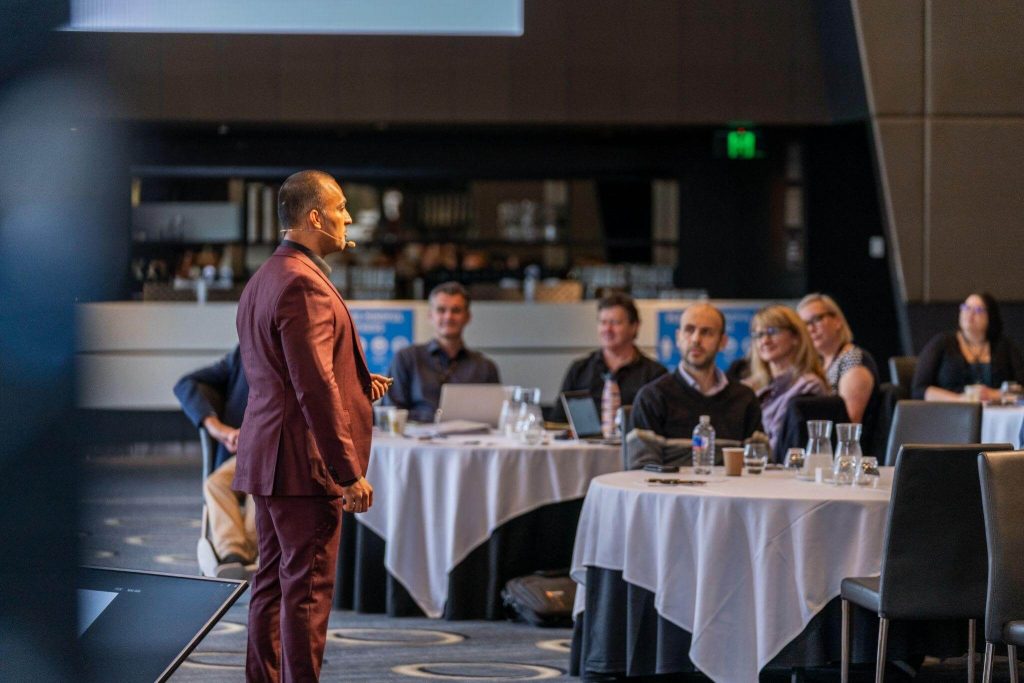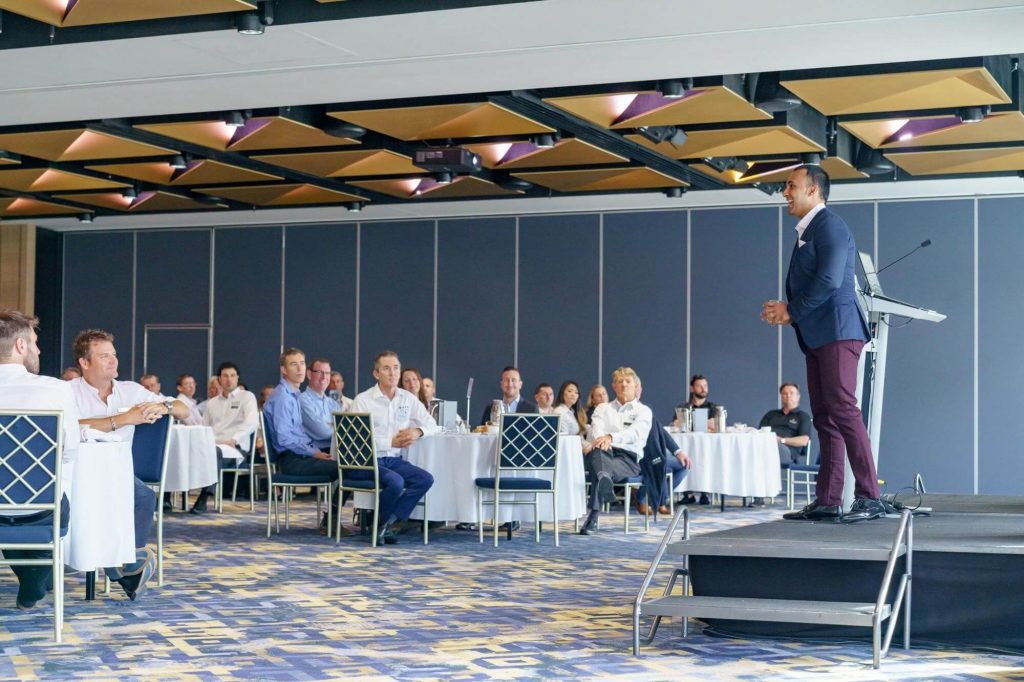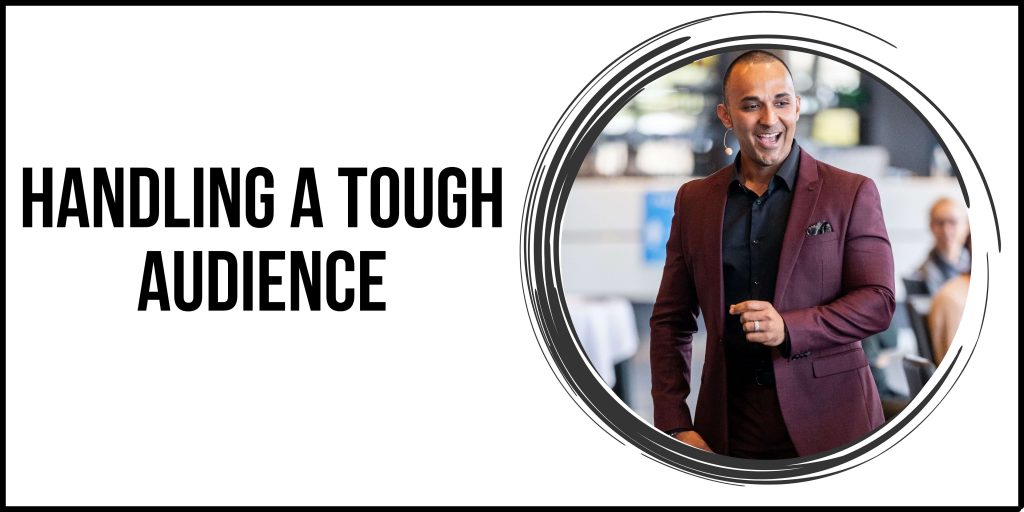Guest blogger: Shil Shanghavi
In 2020, I was booked as the opening speaker for an event to present my public speaking story. I was thrilled, because the start of an event is a prime speaking spot. Everybody is fresh, the caffeine has kicked in and people are enthusiastic – plus, it’s a common time to have a full house.

As usual, I arrived an hour early to set up, familiarise myself with the environment and meet the crowd. On this occasion however, from the moment I stepped into the room I sensed an air of hostility.
Initially, I was surprised by the reception. For weeks I had been liaising with the event organiser, ensuring the story and supporting collateral was accurately positioned. I researched and prepared myself for the audience. I made an effort to have genuine conversations. I dressed appropriately and even had some relevant industry conversation starters. It was only until I chatted with a particular gentleman that I realised I was in for a difficult hour.
He said he didn’t want to be there and according to him, neither did most people. They would have preferred to ‘get on with their day’ rather than ‘listening to speakers who waste their time.’ He had no idea I was the opening speaker, so I patiently listened to how this was going to be a waste of time for everybody. As soon as I sensed a break in conversation, I excused myself to calm my already rattled nerves and map out a plan for how I was going to handle a group who were disengaged, uninterested and by all accounts, didn’t want to be there.
To do this, I mapped out a 3-step plan which started with my opening.

Cement my opening anchor
A strong start is absolutely critical for any presentation. It sets the tone for the rest of our talk and lets the audience know we, as the speaker, are in control of the journey. Knowing what I knew, I felt my opening anchor was not strong enough for this audience, and I needed something more creative. I needed something which would send shockwaves through the audience and create an instant sense of intrigue. I decided to experiment with something I had never tried before (a risky strategy!). I walked to the middle of the stage and stood silently for a full 10 seconds. I looked around the room before slowly unfolding a piece of paper, and read off it in a foreign language (Swahili). I switched off my stutter control and had to become 100% comfortable with my broken fluency in all it’s glory.
When I raised my head, people looked confused. They looked uncomfortable. They looked like they felt sorry for me.
I added drama to my opening by shuffling, looking visibly nervous and uncomfortable, breathing fast (and purposely into my lapel) before closing my eyes, slowing my breath, pausing for another 10 seconds and in doing so, making myself the centre of attention.
When I re-opened my eyes, I looked delicately at the gentleman who I’d been speaking to, crunched the piece of paper, threw it backwards over my shoulder, took a confident step forward and started speaking ‘effortlessly’.
It worked!
I had their attention.
Now, I had to keep it. And to do this, I shifted to having a facilitated conversation rather than delivering a presentation.

Positioning and Demeanour
To switch from presentation to facilitated conversation, I jumped off stage. Literally. I jumped right off the stage and onto the floor. As I landed, I slowly looked over my shoulder, back at the spot I had just left, before turning around to look at the audience. I smiled, walked right into the first 2 rows and did something I once saw my friend Dave Clare do – grabbed a chair and sat on a table with the guests. Conveniently, it happened to be the table with the aforementioned gentleman.
I took my jacket off, placed it over my chair, rolled my sleeves up and asked permission to sit down. By joining their table, I was no longer ‘the presenter’ and instead, I was welcomed as one of the group members.
As I sat, I continued delivering my story – with a few key differences. I lowered my voice (which was amplified through the lapel for the rest of the room to hear), balanced my eye contact and looked at everybody on the table, and tilted my head slightly to my left – projecting empathy through my body language.
Once I approached the end of my paragraph, I stood up, positioning myself between 2 tables and created a segue so to link the 2 tables, encouraging them to have a conversation.
It worked!
I was keeping their attention.
Now, I had to keep it and brace myself for any tricky questions and to do this, I needed to be aware of everything around me.

Awareness
Public observing is essential for increasing our awareness.
This means being extremely conscious of our surroundings through reading body language, tone, language, gestures and eye contact, and adapting to it.
Whenever somebody said something, I would repeat their message confirming what they said, form a positive question around it and ask the group to contribute to that question. If I sensed a hostile response I would embrace it, understand their perspective and suggest an alternative way of thinking. To make this relevant, I told parallel stories about my own journey so everybody could see that I had experienced the same path they had.
By letting my guard down and openly speaking about my challenges, I let everybody see my vulnerability. I wanted them to know I have nothing to hide and, like them, I had the same fears, doubts and insecurities.
We continued having a conversation for 30mins, before diving into a Q&A and finishing with a rapturous applause. I felt I handled and won over a really tough audience, and my feeling was validated when the same gentleman walked over to me, shook my hand and said, “Mate, I wasn’t expecting that. Thanks for opening up with us.”
I’ll never forget the look he gave me, and I thanked him for allowing me to be part of his day.
For these techniques to work a presentation needs a flexible structure, one that can be moulded with minimal disruption to our message. When we have a deep understanding of our structure and message, it’s embedded into our DNA and we can modify our content and delivery to suit any audience, even a tough audience.
It takes time, and practice, and a complete ownership of ourselves so even when we do make a mistake, it’s okay. I’ve had a few tricky audiences since that day and every time I sense it might be difficult, I apply these techniques because it gives me the best chance of handling a tough audience.


Thanks for the post, Such an important topic – hostile audience. Handy tips to break the difficult silence!!!